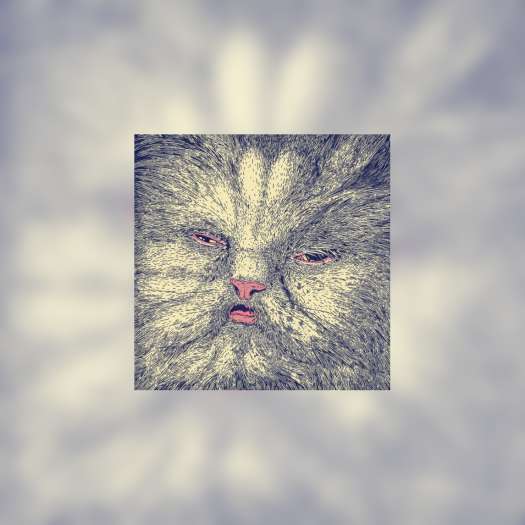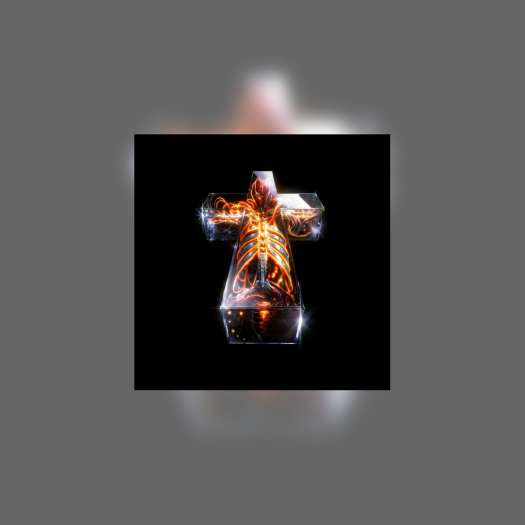"It represents a way of telling a story that we've been missing for a long time," Noémie Merlant tells Exclaim! about her new film, Portrait of a Lady on Fire. An incredibly romantic film, and one of the best explorations of female desire put to screen, director Céline Sciamma's vision has been burning in our minds. It's a masterful portrait of a love story between two women under a female gaze that doesn't allow for fetishization. Sciamma creates authenticity, not only in her representation of lesbian love, but simply, how the film portrays women.
Despite being a story set at the end of the 18th century, it feels contemporary and represents a shift in how female stories are being told. "We've only seen women's stories told through one vision: the patriarchal male vision," Merlant notes. What Portrait represents is a cinematic experience that is no longer ruled by the male gaze.
We follow Merlant's character, Marianne, a painter inspired by many of the female artists that were prominent, but often ignored, during that time period. She has been commissioned to paint a portrait of a young woman named Héloïse (Adèle Haenel), but Marianne is told that she must paint Héloïse in secret, because she refuses to pose. Merlant explains that there never was a muse, never an object, only a subject. This mythical idea of a silent, fetishized woman only inspiring as a presence is gone.
"Marianne isn't completely free at the beginning of the film," Merlant says. "With the first portrait she does [of Héloïse], it's not right. Héloïse says, 'It's not me,' and it's not Marianne's work either. She's following the rules, ideas, conventions of painting. But as this collaboration grows, Marianne begins to follow her own desires. We begin to see what she sees through her eyes and not through the eyes of society."
Sciamma lets the audience see a woman toss away convention in an environment absent of patriarchal influence and take back her agency. "It felt good," Merlant says, with a little laugh and a hint of exuberance. "It feels good to play this kind of character." It's a departure for her, as her roles have been primarily women dependent on someone, like a man, or a teenager without much independence. Merlant says that playing a character like Marianne allowed for more growth as an actor.
"You focus on something else rather than the emotions that come with being controlled by parents or society or a man. You go to find other stuff about the character," she says. "You focus on other details and other feelings. That, for me, was a good acting class, because you learn more about how emotions work, how this character works in her environment, and it creates a place where you're free to play around with ideas and to be completely, well, free. Literally free. It's rare."
Voyeurism is of heavy use by Sciamma, as Marianne must observe Héloïse and commit her image to memory. But as the artist was observing her subject, the subject was watching back. These glances, whether fleeting ones of love, or of an artist's concentration as she glances between canvas and her model, creates some of the most lustful scenes in recent memory. "I find it really sexy," Merlant comments in regards to the intensity of the artistic gaze, which wouldn't have been possible for her to execute without the help of Hélène Delmaire, whose hands we see as Marianne makes rough pencil sketches and portraits of Héloïse. "It's like a dance," Merlant describes as she discusses learning how to carry herself as a painter so convincingly.
"Hélène was on set doing the paintings while we were shooting, so in between filming our scenes, I was watching her, because we had to be in sync and I had to know all her gestures," Merlant explains. "I also had time before filming began to prepare for my role with her and that's when I spent a lot of time observing her. The biggest part of playing an artist is observing first, learning all the techniques of the painting style of that particular century, and also to observe the gaze between the canvas and the model, the reasons behind it and all the steps that go into it. The gaze of an artist is really particular and you have to try to form a full vision of what the painter is doing, and then use the focus of the gaze to see the details."
Another art form of importance in the film is music, despite it being absent of any score. The film takes importance in two pieces. One is an original song titled "La Jeune Fille en Feu" composed by Para One. Merlant recalls how much she loved shooting the scene where the song is utilized. Set late at night around a bonfire, the film's main characters are surrounded by a group of women who begin to chant in Latin. "They were singing for real! It wasn't something that was only recorded later," Merlant says.
The scene is the film's climax, the moment when Marianne's love for Héloïse reveals itself and burns as hot as the image of Héloïse with flames engulfing the bottom of her dress. "I love it. It was incredible. It was a really magical moment," Merlant recalls. "And Adèle [Haenel] was on fire... It was really crazy."
There's a lot of important imagery in the film that, for Merlant, exemplifies why stories of women by women are incredibly important. Having a woman behind the lens allows the right sensitivity when discussing issues of abortion, for example, a female experience that Sciamma touches on in the film and one that Merlant mentions. This is a film with only women and no hierarchy. It's an incredibly feminist and political film, and Merlant emphasizes its importance in the #MeToo era.
"The place of women in society, in culture, and in art is something we're really thinking about," Merlant reflects. "We realize that, in a way, we've erased the history of women because we only know what has been shown to us through one particular lens. I think that's why the film has had such a big impact on people because they've been waiting for a vision like this."
Despite being a story set at the end of the 18th century, it feels contemporary and represents a shift in how female stories are being told. "We've only seen women's stories told through one vision: the patriarchal male vision," Merlant notes. What Portrait represents is a cinematic experience that is no longer ruled by the male gaze.
We follow Merlant's character, Marianne, a painter inspired by many of the female artists that were prominent, but often ignored, during that time period. She has been commissioned to paint a portrait of a young woman named Héloïse (Adèle Haenel), but Marianne is told that she must paint Héloïse in secret, because she refuses to pose. Merlant explains that there never was a muse, never an object, only a subject. This mythical idea of a silent, fetishized woman only inspiring as a presence is gone.
"Marianne isn't completely free at the beginning of the film," Merlant says. "With the first portrait she does [of Héloïse], it's not right. Héloïse says, 'It's not me,' and it's not Marianne's work either. She's following the rules, ideas, conventions of painting. But as this collaboration grows, Marianne begins to follow her own desires. We begin to see what she sees through her eyes and not through the eyes of society."
Sciamma lets the audience see a woman toss away convention in an environment absent of patriarchal influence and take back her agency. "It felt good," Merlant says, with a little laugh and a hint of exuberance. "It feels good to play this kind of character." It's a departure for her, as her roles have been primarily women dependent on someone, like a man, or a teenager without much independence. Merlant says that playing a character like Marianne allowed for more growth as an actor.
"You focus on something else rather than the emotions that come with being controlled by parents or society or a man. You go to find other stuff about the character," she says. "You focus on other details and other feelings. That, for me, was a good acting class, because you learn more about how emotions work, how this character works in her environment, and it creates a place where you're free to play around with ideas and to be completely, well, free. Literally free. It's rare."
Voyeurism is of heavy use by Sciamma, as Marianne must observe Héloïse and commit her image to memory. But as the artist was observing her subject, the subject was watching back. These glances, whether fleeting ones of love, or of an artist's concentration as she glances between canvas and her model, creates some of the most lustful scenes in recent memory. "I find it really sexy," Merlant comments in regards to the intensity of the artistic gaze, which wouldn't have been possible for her to execute without the help of Hélène Delmaire, whose hands we see as Marianne makes rough pencil sketches and portraits of Héloïse. "It's like a dance," Merlant describes as she discusses learning how to carry herself as a painter so convincingly.
"Hélène was on set doing the paintings while we were shooting, so in between filming our scenes, I was watching her, because we had to be in sync and I had to know all her gestures," Merlant explains. "I also had time before filming began to prepare for my role with her and that's when I spent a lot of time observing her. The biggest part of playing an artist is observing first, learning all the techniques of the painting style of that particular century, and also to observe the gaze between the canvas and the model, the reasons behind it and all the steps that go into it. The gaze of an artist is really particular and you have to try to form a full vision of what the painter is doing, and then use the focus of the gaze to see the details."
Another art form of importance in the film is music, despite it being absent of any score. The film takes importance in two pieces. One is an original song titled "La Jeune Fille en Feu" composed by Para One. Merlant recalls how much she loved shooting the scene where the song is utilized. Set late at night around a bonfire, the film's main characters are surrounded by a group of women who begin to chant in Latin. "They were singing for real! It wasn't something that was only recorded later," Merlant says.
The scene is the film's climax, the moment when Marianne's love for Héloïse reveals itself and burns as hot as the image of Héloïse with flames engulfing the bottom of her dress. "I love it. It was incredible. It was a really magical moment," Merlant recalls. "And Adèle [Haenel] was on fire... It was really crazy."
There's a lot of important imagery in the film that, for Merlant, exemplifies why stories of women by women are incredibly important. Having a woman behind the lens allows the right sensitivity when discussing issues of abortion, for example, a female experience that Sciamma touches on in the film and one that Merlant mentions. This is a film with only women and no hierarchy. It's an incredibly feminist and political film, and Merlant emphasizes its importance in the #MeToo era.
"The place of women in society, in culture, and in art is something we're really thinking about," Merlant reflects. "We realize that, in a way, we've erased the history of women because we only know what has been shown to us through one particular lens. I think that's why the film has had such a big impact on people because they've been waiting for a vision like this."




